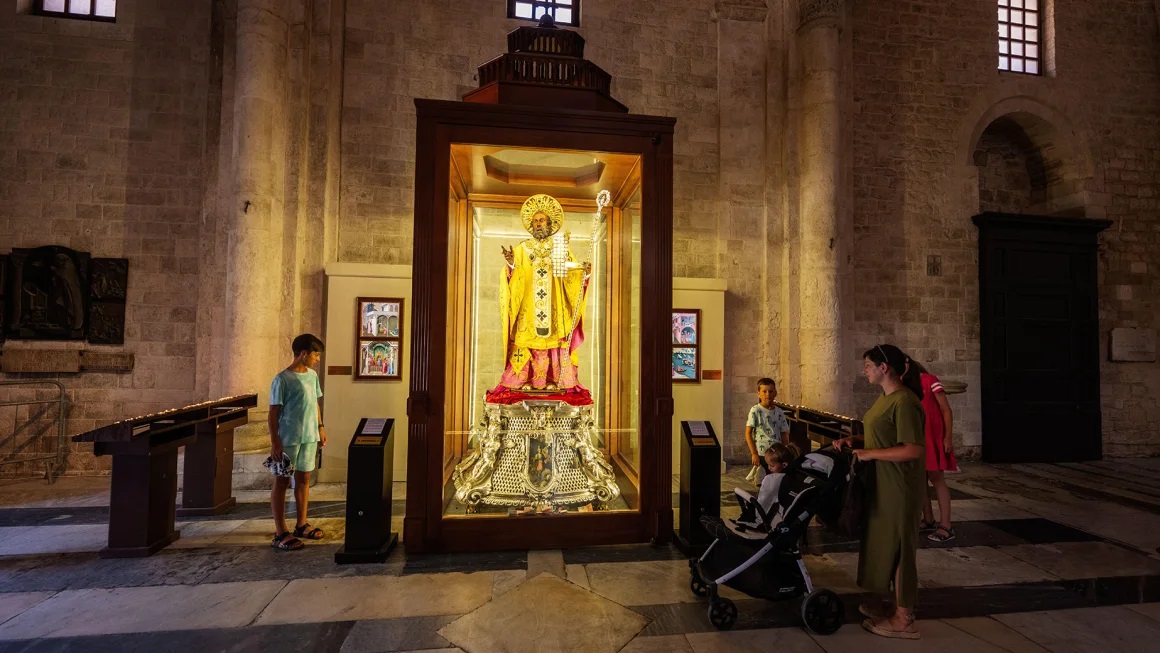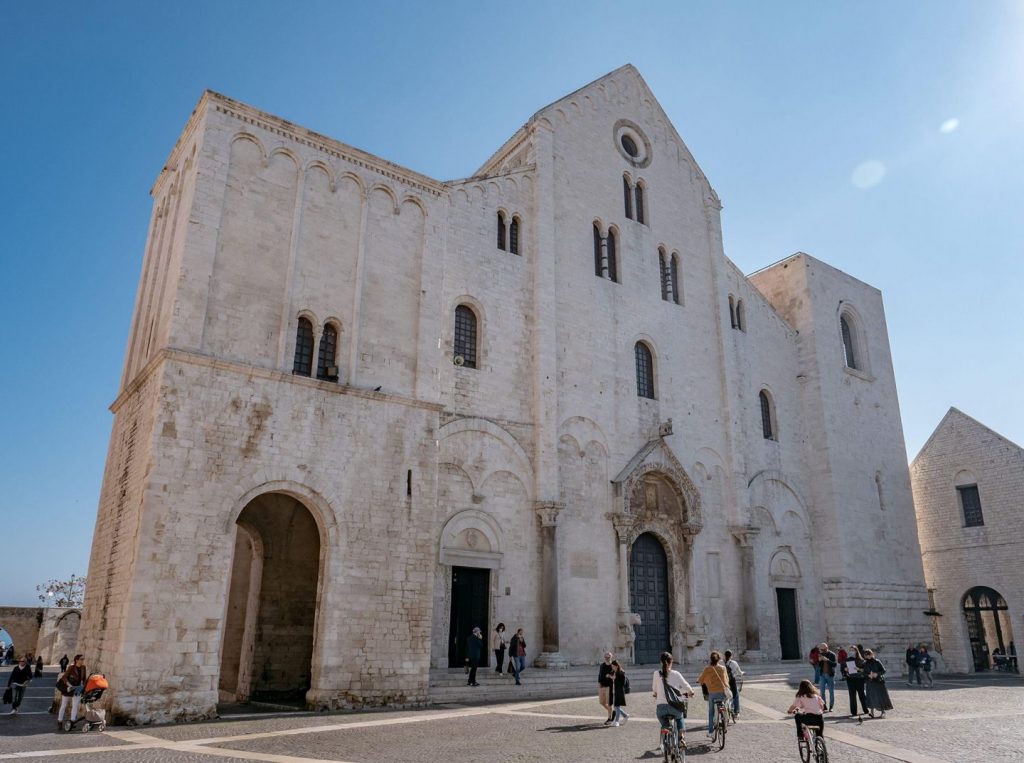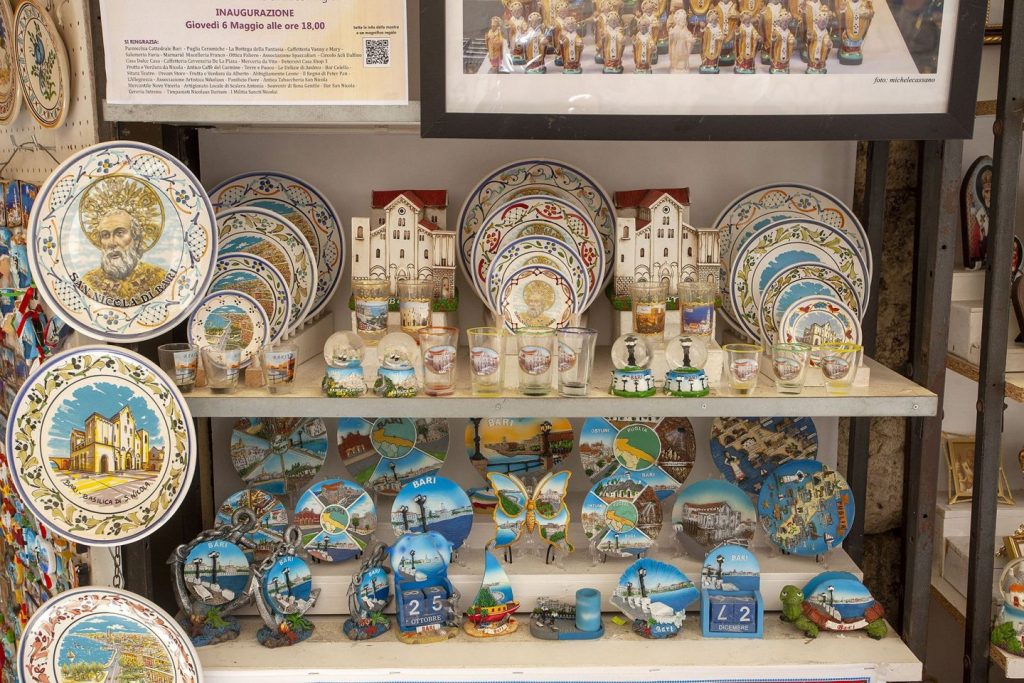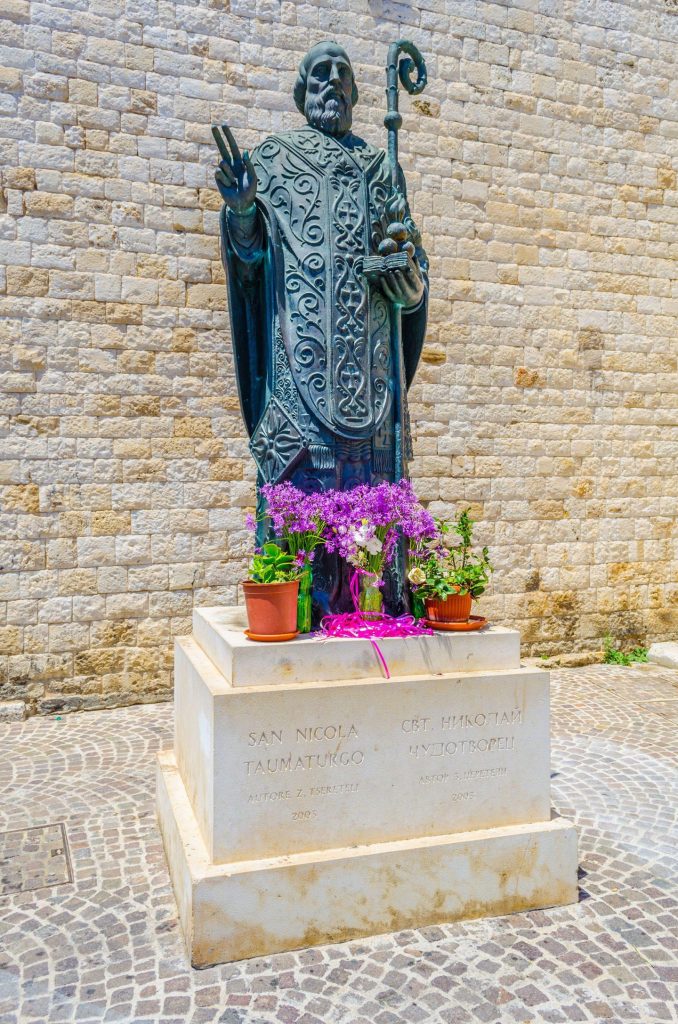CNN — Everyone knows that Santa will be doing the rounds at Christmas, squeezing down chimneys, knocking back glasses of whiskey, leaving presents under trees and ho-ho-ho-ing all the way back to the North Pole in his flying sled.
Or – and you’ll want to ask children to look away at this point – will he actually just be lying dead beneath a church named after him in a port in southern Italy?
The town of Bari, located on the heel of Italy’s boot, has laid claim to this alternate Santa story for nearly 1,000 years after the bearded gift-giver’s remains were said to have been interred beneath a church that bears his name.
Santa here is Saint Nicholas, globally acknowledged as the man who inspired the Santa Claus legend. Nicholas, also known as Niklaus or Nicola, was a real-life Christian saint born, not in the frozen north, but in Myra, in what is today Turkey.
Saint Nick, it is believed, was born around 270 C.E., and died 67 years later. He was revered around the Mediterranean for his generosity, especially in Bari. This is perhaps why Baresi sailors stole his bones in 1087 and moved them to their town.
Today, three-quarters of what is claimed to be Saint Nicholas’ skeleton rests in peace beneath the Basilica of San Nicola, Bari’s largest church, where it is regularly visited by Christians of all denominations from all over the world.
Bari’s residents regularly celebrate their connection to Saint Nick, but are somewhat nonplussed about his role in the commercial extravaganza that is modern-day Christmas.
Local hero
“Locals are proud that their city is popular for three things: delicious mussels, pristine beaches and Saint Nicholas,” says Antonio Palumbo, a movie director from Bari who made a documentary about the saint’s link with Santa.
“But they don’t feel that the saint’s cult has anything to do with the city’s Christmas connection.”
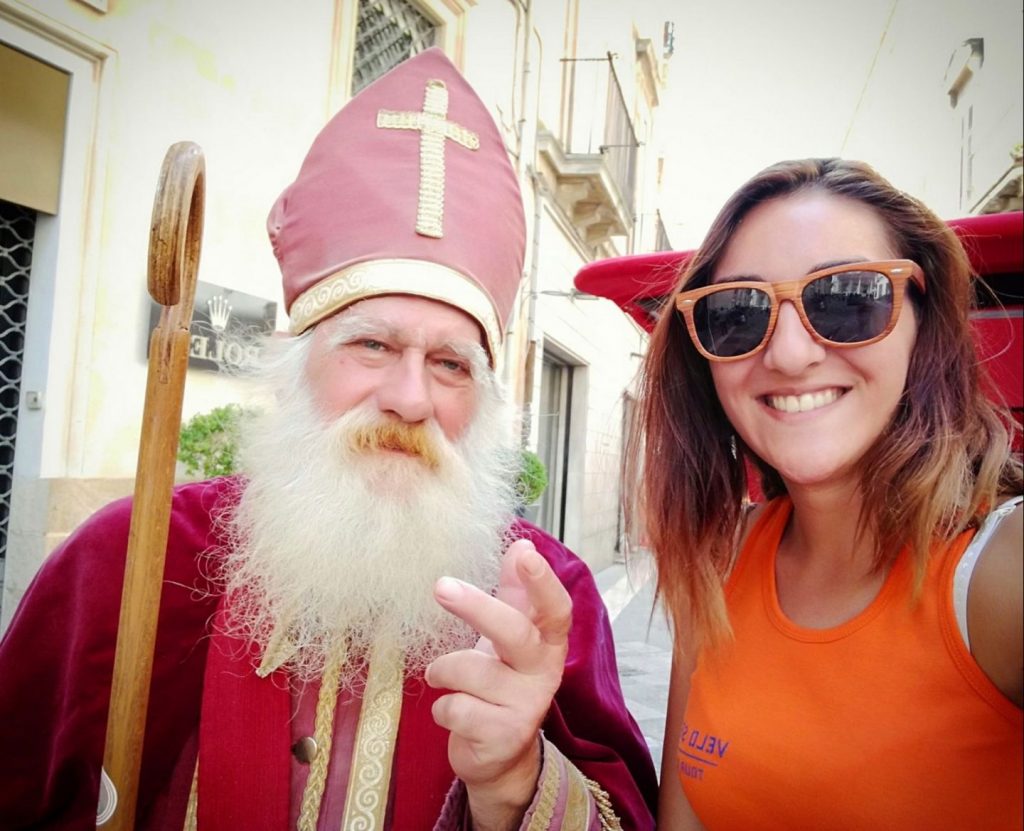
Among the people of Bari, says Palumbo, there’s a distinct reluctance to embrace the Santa/Saint Nick origin story, partly because the famous image of a white-bearded man in red was concocted by American fizzy drink marketers.
“Father Christmas is seen as an outsider, a consumeristic figure imported from the States, whose jolly red face and round belly was created and exploited in the 1930s by Coca-Cola for advertisement purposes to push families to buy Coke because kids loved it,” says Palumbo.
Locals, who keep good-luck images and statuettes of San Nicola in their wallets and cars, perceive their local hero as very distinct from Santa.
“We worship our patron Saint Nicholas, we pray to him in hard times, he watches over kids, young women, sailors and traders,” says Maria Rita Mauro, head of the local tourist office.
“He’s our cult, and we don’t see him as Santa, just San Nicola.”
Celebrations for Saint Nicholas Day begin in Bari on the night of December 5. Locals attend Roman Catholic Mass at dawn the next day and then tuck into hot chocolate, pancakes and sticks of fried polenta called sgagliozze. Street concerts are held as the statue of San Nicola is paraded through the old district to a huge Christmas tree. Bars and pastry shops are open non-stop.
As Nicholas is also a patron saint of unmarried women, young girls looking for a husband traditionally line up in the basilica, praying for betrothal.
The Coke connection
According to Cioffari’s research, the worldwide metamorphosis of Saint Nick into Santa Claus started in the 1600s when the saint was exported to the New World via Dutch settlers in New Amsterdam, or what is now Manhattan.
“Many American poems and books published in the 1800s, including works by Washington Irving, write about and depict Saint Nicholas as entering homes and carrying gifts to kids on Christmas Eve, and then flying away on a sledge pulled by reindeer,” he says.
In these books, he is still called Saint Nicholas, though the color of his robe is ever-changing.
The success of the red uniform proposed by Coca-Cola in a 1930s campaign “baptized” and consecrated Santa’s image as we know it today, says Cioffari. Most likely because it recalled the red of the drink label.
However, things are slowly stirring in Bari. A new awareness is spreading among some Baresi, eager to boost efforts to exploit the Nicholas-Santa link and turn Bari’s Christmas connections into a tourist highlight.

